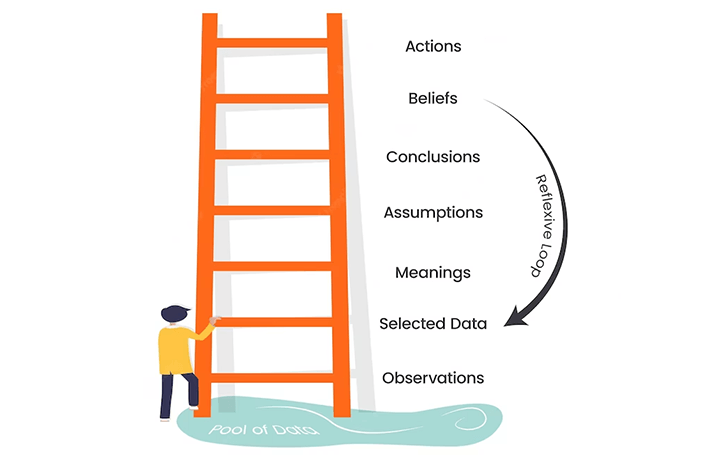
Click the button to start reading
Unlock the Power of Strategic Marketing: A Comprehensive Guide to the Strategic Marketing Process
Ah, the elusive art of strategic marketing—both the lifeblood of business success and the bane of many a marketer’s existence. It’s a critical component for any business seeking to carve out a niche in today’s competitive landscape. But fear not, for this article shall be your guiding light in navigating the labyrinth of the strategic marketing process.
By the end of our marketing odyssey, you’ll have gained a deeper understanding of the three vital phases: planning, implementation, and evaluation.
We’ll dive into the nitty-gritty of market analysis, strategy formulation, and the ever-important art of executing your master plan. And as a bonus, we’ll also touch upon the impact of digital technology and the need to stay agile in an ever-evolving marketing landscape.

Understanding the Strategic Marketing Process
Before diving headfirst into the particulars of each phase, let’s ensure we’re all on the same page by taking a more in-depth look at the strategic marketing process. In this section, we’ll explore its definition, discuss its importance, and introduce the three key phases that form the backbone of this essential business practice.
Definition of strategic marketing process
The strategic marketing process can be described as a methodical approach to developing, implementing, and evaluating marketing strategies that empower a business to achieve its objectives.
In other words, it’s the secret sauce that can transform a marketing campaign from a bland, forgettable experience into a flavorsome, memorable feast for the senses!
Importance of the strategic marketing planning process
A robust strategic marketing planning process is paramount for any business looking to thrive in today’s competitive marketplace. This process serves as a roadmap, equipping businesses with the tools to make informed decisions, anticipate market trends, and adapt to evolving consumer preferences.
In essence, it’s the North Star that guides your business safely through the ever-changing landscape of the marketing world.
The 3 phases of the strategic marketing process: Planning, Implementation, and Evaluation
With the stage set, let’s now introduce the stars of the show: the three critical phases of the strategic marketing process. Like a well-choreographed dance routine, each phase plays a crucial role in the overall performance, working in harmony to create a marketing masterpiece.
- Planning: This is the phase where the magic begins. We embark on a journey of discovery, using market analysis, segmentation, and target market selection to gather valuable insights. By defining marketing objectives and crafting a well-thought-out strategic plan, we lay the groundwork for a triumphant marketing campaign.
- Implementation: With a solid plan in hand, it’s time to bring our marketing vision to life. During this phase, we focus on aligning our marketing strategy with the overarching business objectives, developing a unique value proposition, and allocating resources efficiently. This is where we roll up our sleeves and put our carefully crafted plan into action.
- Evaluation: Last but certainly not least, we have the evaluation phase. Here, we assess the effectiveness of our marketing efforts, using data-driven insights to measure performance and make adjustments as needed. It’s the final checkpoint, ensuring that our marketing campaign delivers on its promises and drives our business towards success.
Now that we’ve laid the foundation, let’s delve deeper into the intricacies of each phase, unraveling the mysteries of the strategic marketing process and unlocking its full business potential.

Strategic Marketing Process Phase 1: Planning
Much like a masterful conductor orchestrating a symphony, the planning phase sets the tempo for our marketing magnum opus. In this section, we’ll delve into the art of situation analysis, explore the intricacies of market segmentation and target market selection, and define our marketing objectives. Lastly, we’ll unveil the 5-step strategic marketing process that will guide us towards success.
Situation analysis
Before we delve into the nitty-gritty of planning, it’s crucial to first take stock of our current situation. A comprehensive situation analysis provides us with the necessary context and perspective to make informed decisions as we chart our marketing course.
By evaluating our internal strengths and weaknesses, as well as external opportunities and threats, we’ll gain a clear understanding of the landscape in which we operate.
Let’s explore two essential components of a thorough situation analysis: SWOT analysis and competitor analysis.
- SWOT analysis – The cornerstone of any solid planning process, the SWOT analysis, invites us to take a good, hard look in the proverbial mirror. We’ll examine our business’s Strengths, Weaknesses, Opportunities, and Threats, allowing us to capitalize on our competitive advantages while addressing areas of vulnerability. It’s the ultimate reality check, enabling us to build a resilient marketing plan.
- Competitor analysis – Competitor analysis is the recon mission of our planning phase. By scrutinizing our rivals’ strengths and weaknesses, we can identify gaps in the market, pinpoint potential competitive advantages, and develop strategies to outwit and outmaneuver the competition. It’s like playing a high-stakes game of chess, where knowledge is power and foresight can mean the difference between victory and defeat.
Market segmentation
In the realm of marketing, one size most certainly does not fit all. Market segmentation allows us to slice and dice the vast, unwieldy market into manageable, meaningful segments.
By categorizing consumers based on factors like demographics, psychographics, and behavior, we can tailor our marketing strategies to resonate with specific groups, ensuring maximum impact and efficiency.
Target market selection
Armed with our segmented market, it’s time to choose our target audience. This step is akin to selecting the ideal dinner guests for an exclusive soiree—those most likely to appreciate and engage with our offering.
Target market selection is crucial, as it enables us to focus our marketing resources on the most promising prospects and drive the greatest return on investment.
Defining marketing objectives
With our target market in our sights, it’s time to chart our course towards success by defining clear, measurable marketing objectives. These goals serve as our North Star, guiding our marketing efforts and providing a benchmark against which we can measure our progress.
It’s the point where our marketing dreams begin to take shape, as we set our sights on tangible, achievable outcomes.
The 5-step strategic marketing process
Embarking on the strategic marketing journey requires a clear roadmap to guide us towards our desired destination. The 5-step strategic marketing process provides us with this essential blueprint, outlining the key stages we must navigate as we craft and execute our masterful marketing plan.
From defining our mission to evaluating our results, each step plays a vital role in shaping the trajectory of our marketing campaign. Let’s explore the inner workings of this powerful process and discover how it can propel businesses to new heights.
Strategic Marketing Process Step 1: Mission
In the first step of our strategic marketing process, we’ll craft a compelling mission statement that encapsulates our brand’s purpose, values, and raison d’être.
For example, a mission statement for an eco-friendly clothing brand might be “To create stylish, sustainable apparel that empowers consumers to make a positive impact on the environment.”
This mission statement will serve as the rallying cry for our marketing efforts, unifying our team and inspiring action.
Strategic Marketing Process Step 2: Goals
With our mission statement firmly in place, we’ll establish specific, measurable, achievable, relevant, and time-bound (SMART) goals that will drive our marketing strategy. For instance, one goal could be to increase online sales by 15% within the next six months.
These goals provide focus and direction, ensuring that our marketing efforts are aligned with our overall business objectives.
Strategic Marketing Process Step 3: Strategies
Now that we have our goals set, it’s time to devise the master plan. In this step, we’ll develop high-level strategies that outline how we’ll achieve our goals.
For example, to increase online sales, a strategy might be to improve website user experience and expand social media presence.
Think of these as the secret recipes in our marketing cookbook, combining the right ingredients to create a sumptuous feast of success!
Strategic Marketing Process Step 4: Tactics
Strategies are nothing without the right tactics to bring them to life. In this step, we’ll outline the specific actions and initiatives required to execute our strategies effectively.
For example, to improve website user experience, tactics could include revamping the website design, optimizing product pages, and enhancing site speed. Likewise, for expanding social media presence, tactics might involve creating engaging content, running targeted ads, and collaborating with influencers.
Strategic Marketing Process Step 5: Evaluation
The final step of our 5-step strategic marketing process is evaluation, where we establish how the success of our marketing efforts will be assessed. In this stage, we outline the methods and tools we’ll use to monitor and evaluate the effectiveness of our tactics over time.
By setting clear evaluation criteria, such as tracking Key Performance Indicators (KPIs) and analyzing marketing analytics, we can gauge the success of our campaign and make necessary adjustments for continuous improvement.
And there you have it—the planning phase in all its glory. By carefully analyzing our situation, segmenting the market, selecting our target audience, and defining our marketing objectives, we’ve laid the groundwork for a successful marketing campaign.
With the 5-step strategic marketing process as our guide, we’re ready to embark on the next exciting chapter in our marketing adventure: implementation.

Strategic Marketing Process Phase 2 Implementation
With a rock-solid plan in hand, it’s time to embark on the exhilarating journey of implementation. In this phase, we’ll focus on maintaining the alignment of our marketing strategy with our business objectives and allocating resources wisely. We’ll also explore the art of executing the marketing strategic planning process and the pivotal role of digital technology in today’s marketing landscape.
Ensuring alignment during implementation
As we begin to implement our marketing initiative, it’s crucial to consistently check that our marketing efforts align with our business objectives throughout implementation. This helps to maintain focus and enhance the effectiveness of our marketing campaign.
For example, consider a company that aims to become a leader in sustainable fashion; its marketing strategy should focus on promoting eco-friendly materials, ethical production processes, and showcasing the brand’s commitment to environmental responsibility.
By continuously referring back to the business strategy and ensuring that all actions and initiatives align with it, marketers can maintain a harmonious, cohesive whole that resonates with their target audience and drives success.
It’s the glue that binds our marketing masterpiece together, ensuring each piece fits seamlessly to reveal the bigger picture.
Allocating resources
Much like a master chef carefully measuring ingredients, the allocation of resources is a delicate balancing act. In this step, we’ll determine how to distribute our marketing budget, time, and manpower to achieve maximum impact.
By prioritizing tasks, optimizing efficiency, and keeping a keen eye on our bottom line, we’ll ensure that our marketing machine runs smoothly and effectively.
Execution of the marketing strategic planning process
It’s showtime! With everything in place, it’s time to put our plan into action. In this stage, we’ll implement the strategies and tactics outlined in our marketing plan, bringing our marketing vision to life.
From launching social media campaigns to crafting captivating content, every element of our plan comes together in a dazzling display of marketing prowess. It’s the moment where our hard work and preparation pay off, as our marketing symphony reaches its crescendo.
Leveraging digital technology in the strategic marketing process
In today’s fast-paced, technology-driven world, digital tools and platforms have become indispensable allies in our marketing endeavors.
From social media and email marketing to analytics and automation, digital technology allows us to amplify our reach, engage with our target audience, and measure our performance with unprecedented precision.
By harnessing the power of digital technology, we can supercharge our marketing efforts and propel our businesses to new heights.
And so, we’ve reached the thrilling conclusion of the implementation phase. By aligning our marketing and business strategies, allocating resources, and leveraging the power of digital technology, we’ve set the stage for a marketing tour de force. But the journey doesn’t end here.
Stay tuned as we venture into the final phase of our strategic marketing process odyssey: evaluation.

Strategic Marketing Process Phase 3: Evaluation
As our marketing opus reaches its grand finale, it’s time for the curtain call: the evaluation phase. In this crucial stage, we’ll assess the effectiveness of our marketing efforts, using data-driven insights to make adjustments as needed.
It’s a process of continuous improvement and adaptation, ensuring that our marketing campaign remains agile, resilient, and primed for success.
Monitoring and measurement
As we sail through the evaluation phase, it’s essential to arm ourselves with the right tools to measure the success of our marketing efforts. A combination of Key Performance Indicators (KPIs) and marketing analytics equips us with a comprehensive understanding of our campaign’s performance, allowing us to make informed decisions and refine our strategies as needed.
With these powerful instruments in our arsenal, we can navigate the turbulent seas of the marketing world with confidence and skill. Let’s delve deeper into the critical roles KPIs and marketing analytics play in the evaluation phase.
Key Performance Indicators (KPIs)
In the realm of evaluation, Key Performance Indicators (KPIs) are our trusty sidekicks, providing valuable insights into the success of our marketing efforts.
These quantifiable metrics allow us to track our progress against our marketing objectives, revealing where we’ve triumphed and where we’ve stumbled.
KPIs are like the compass that keeps our marketing ship on course, guiding us through the choppy waters of the marketing world.
Marketing analytics
If KPIs are our compass, marketing analytics is our treasure map. This powerful tool allows us to dive deep into the data, uncovering patterns, trends, and insights that can inform our marketing decisions.
By analyzing metrics such as customer engagement, conversion rates, and return on investment, we can fine-tune our strategies and sharpen our marketing swords for future battles.
Adjusting marketing strategies as needed
With our monitoring and measurement tools in hand, it’s time to take action. The evaluation phase is all about learning from our successes and failures, using our newfound knowledge to make adjustments to our marketing strategies.
It’s a process of trial and error, experimentation, and iteration, as we continually refine our approach and adapt to the ever-changing marketing landscape.
Continuous improvement and adaptation
As the saying goes, “change is the only constant,” and the world of marketing is no exception. In the evaluation phase, we embrace the spirit of continuous improvement and adaptation, constantly seeking ways to optimize our marketing efforts and stay ahead of the curve.
It’s a mindset that fosters resilience, agility, and innovation, empowering our business to weather the storms of an increasingly competitive marketplace.
And there you have it—the grand conclusion to our strategic marketing process saga. Through the thrilling twists and turns of planning, implementation, and evaluation, we’ve charted a course towards marketing excellence.
By embracing the principles of continuous improvement, adaptation, and data-driven decision-making, we’ve equipped our companies with the tools to succeed in today’s fast-paced business world.
So, take a bow, intrepid marketer, and revel in the knowledge that you’ve unlocked the secrets of the strategic marketing process. The stage is set, the spotlight is on, and the world is yours for the taking!

Embracing Change in the Strategic Marketing Landscape
As we take our final bow, let’s reflect on the transformative power of digital technology and its impact on the strategic marketing process.
From social media platforms to data analytics, digital tools have revolutionized the way we connect with our audiences, measure success, and optimize our strategies. By embracing these innovations, we can harness their potential to create truly groundbreaking marketing campaigns.
However, in the ever-evolving marketing landscape, staying agile and adaptive is the key to success. Much like a nimble dancer, we must be prepared to pivot, adjust, and adapt as new trends and technologies emerge.
By adopting a mindset of continuous learning and improvement, we can ensure that our marketing strategies remain fresh, relevant, and poised for victory.
So, embrace change, cultivate resilience, and let your marketing journey be a dazzling display of creativity, innovation, and triumph!
















